PLACES OF INTEREST
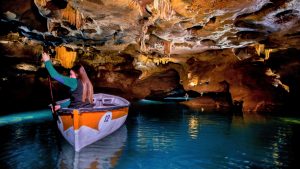
With the longest navigable underground river in Europe, it is a unique space that has been shaped by water for thousands of years. There is evidence of human presence as far back as 15,000 years ago.
Careful lighting and the peaceful flow of the water make Coves de Sant Josep one of the most important tourist attractions in Spain.
More information at: Coves de Sant Josep
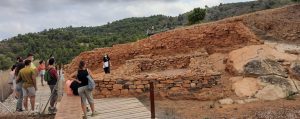
Located on the hill that houses Coves de Sant Josep, it contains remains of human settlements from different periods. The Iberian occupation (6th-2nd century BC) and the Late Roman period (4th and 5th centuries AD) stand out.
There is the possibility of getting to know it in depth through the guided tours given by the professional guides of the Tourist Info. More information at: Village of Sant Josep
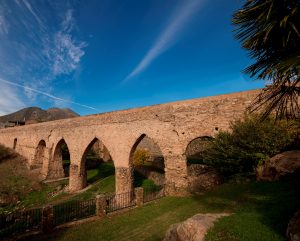
The most outstanding element of a hydraulic complex that transported water from the Sant Josep Fountain to the village is the Aqueduct of Sant Josep. Its construction points to a Roman origin, although the three central arches are clearly medieval, probably the result of a 14th century reconstruction. In addition, you can also see the Alcudia Aqueduct formed by a semicircular arch and two flour mills, all of medieval origin.
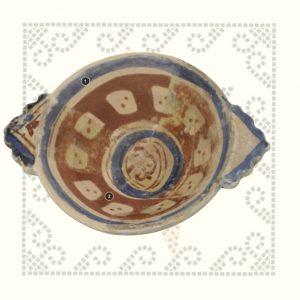
Archaeological remains of the 14th century tower that was attached to the Palace of the Duke of Segorbe, lord of the town. The tower was a symbol of his feudal power and gave rise to the municipal coat of arms.
In the various studies of the tower and the cistern, several pieces have been found that can be found in our virtual museum. One of them is this piece of crockery belonging to the feudal lord who lived in the castle in the 14th century, the Duke of Segorbe. A bowl with lobed lugs made of gilt and cobalt blue earthenware.

Major parish church as it is the oldest in the city, its current church was built in the 17th century and enlarged in the mid-18th century.
Its baroque façade, recently endowed with an eighteenth-century architectural finish, has a bell tower on one side, dating from the mid-seventeenth century, with a strong influence of the Escorial style in its capital.
The interior, Baroque in its vaults and neoclassical in its decorative elements, houses a collection of fresco paintings made at the end of the 18th century, the most outstanding being the mural that covers the entire vault of the Presbytery with the representation of “La Gloria”, attributed to the painter José Vergara.
The temple houses important examples of altarpieces, such as the main altarpiece with marble of different colours, or the one containing the painting of “Nuestra Señora de los Ángeles Custodios” in the chapel of the Sagrario, by the Valencian painter Jerónimo Jacinto de Espinosa.
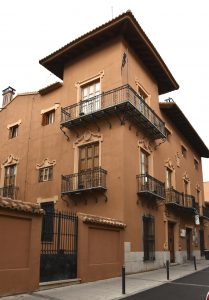
This summer house of the Marquises of Vivel was built in the 1920s in the Belle Époque style. It is now an active free cultural centre, a venue for exhibitions and cultural events.
- Visiting hours:
- Wednesday to Friday: 11h-13h and 18-20h.
- Saturdays and Sundays: 18h-20h.
August closed.
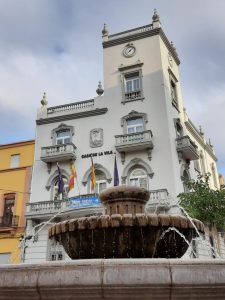
The current town hall was completed in 1931, celebrating the granting of the title of town. Built in a neo-baroque style, it serves as a union and meeting point between the two realities that make up the town: El Lloc de Dalt and El Lloc de Baix.
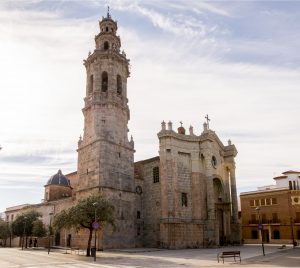
Parish church dedicated to Our Lady of the Assumption created by papal bull in 1602, the temple is a work carried out in the 17th and 19th centuries, in which the Baroque bell tower stands out, completed in 1791 according to the designs of the master Jacinto Agustí, and restored in 1991.
The altarpiece façade was completed in 1926 in neoclassical style. The current images that adorn it are “San Alfredo Abad” and “San Vicente Ferrer” in the lateral niches and the “Relieve de la Asunción” in the centre, above the lintel of the door.
Inside, the frescoes that adorn the vaults stand out, as well as the baptismal font, a parish symbol due to the “sacramental font” that identifies it. It had been hidden under the altar dedicated to San Cristóbal for many years, and was recovered in 1994 when the baptistery was renovated.
There is also a monumental 17th century cistern in the basement, which will soon be open to visitors:
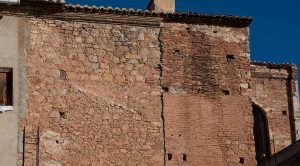
The only visible remains of the old Muslim farmhouses that make up the historic quarter. It was located in the centre of the farmhouse called Benizahat and was a defensive tower from the 11th century. At the end of the street, on the mountain, we can see the remains of the old Andalusian castle of Uixó, which gives its name to the valley.
It is currently being developed as an interpretation centre for visitors.
This burial place was used between the 4th and 6th centuries, when the territory of the Vall d’Uixó was involved in the clashes between the Visigoths and the Byzantines. In fact, some of the people buried here died violently, probably in battle.






